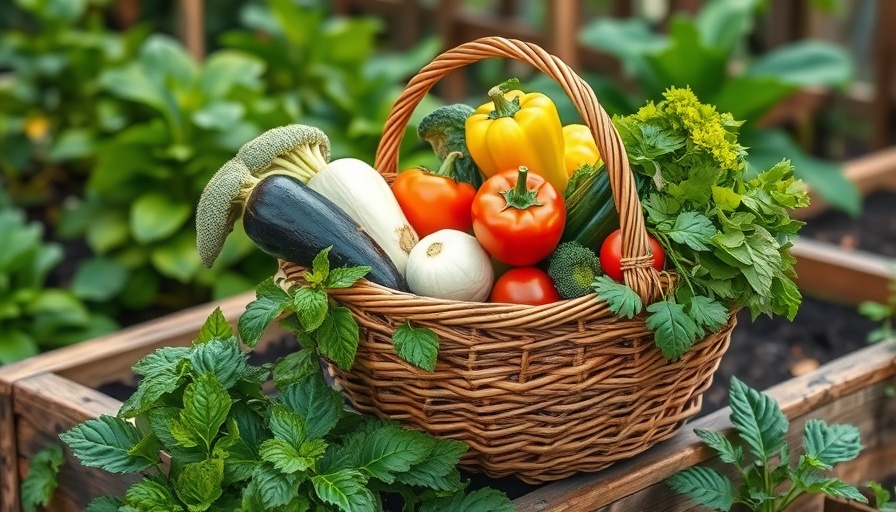
Discover the Joy of Growing Your First Vegetable Garden
Congratulations! You've made the fantastic decision to start a vegetable garden, embracing a venture filled with enriching benefits for both your health and your wallet. Everything from enjoying fresh, organic produce to engaging in the therapeutic act of gardening can transform your relationship with food and nature.
Why Vegetable Gardening Matters
Genetic studies show that children who engage in gardening grow to be more adventurous eaters, likely thanks to the direct connection between planting seeds and enjoying fresh vegetables. But it’s not just about kids—adults, too, experience stress relief and increased wellbeing through gardening. A study from the University of Queensland finds that digging in the dirt can significantly reduce cortisol levels, thus easing anxiety and fostering mindfulness.
Picking Your Perfect Plot
When you're new to vegetable gardening, start small to avoid feeling overwhelmed. Selecting the right location is key for a bountiful harvest. Aim for a level area receiving 6 to 8 hours of sunlight daily, shielded from high winds and close to a water source. A manageable plot size, such as 8 by 8 feet, allows for a good yield without consuming all your spare time.
The Essential Tools for Success
Your journey into vegetable gardening only requires a few basic tools to get you started. Essential items include a trowel, a hand rake, and a watering can. As you refine your skills, consider expanding your toolset to enhance efficiency and tackle more complex tasks.
Choosing Vegetables and Companion Plants
Selecting the right plants not only influences your harvest but also your gardening experience. Opt for easy-to-grow vegetable varieties such as lettuce, radishes, or tomatoes. Companion planting can further enhance your yield—planting basil near tomatoes can deter pests and improve flavor. Research your local climate's growing conditions to select varieties that will thrive in your area.
A Smart Layout That Optimizes Space
Creating a well-planned garden layout maximizes productivity while maintaining ease of access. Consider your vegetable garden’s orientation, allowing taller plants to provide shade for shorter ones. Raised beds can also help with soil drainage and maintenance tasks.
Essential Care for Vegetable Growth
Watering, weeding, and fertilizing are essential aspects of maintaining a healthy vegetable garden. Aim for consistent moisture—ideally, your garden should receive about an inch of water each week, either from rainfall or manual watering. Incorporating organic fertilizers can also provide necessary nutrients without the harmful side effects of chemical additives.
Keeping Pests at Bay
Pest control is an integral part of gardening. Familiarize yourself with common garden pests and their natural predators. Encouraging wildlife, such as ladybugs, in your garden can aid in pest control while promoting a healthier ecosystem. Avoid using harsh pesticides that can harm pollinators and beneficial insects.
Conclusion: Embarking on Your Gardening Journey
Starting a vegetable garden is not merely an exercise in horticulture; it’s an enriching lifestyle choice that offers numerous advantages, from healthier eating to environmental mindfulness. As you dig your hands into the rich soil and nurture your plants, the rewards of your vegetable garden will extend far beyond the produce you harvest.
 Add Row
Add Row  Add
Add 




Write A Comment